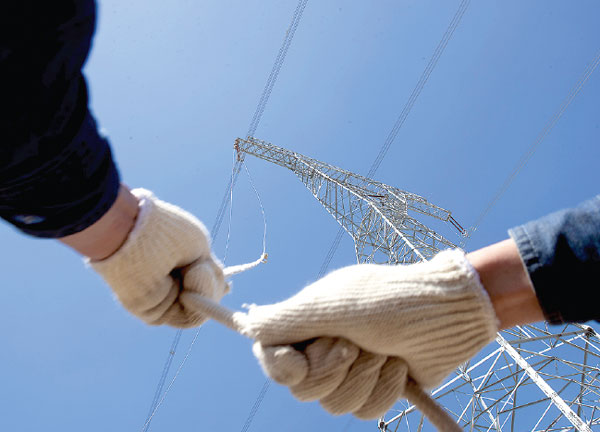The invisible battery set to power the economy
Updated: 2015-01-23 13:33
By Cui Jia(China Daily USA)
|
||||||||
A vast area in the Gobi Desert will soon supply electricity for the country's industrial heartland, reports Cui Jia in the Changji Hui autonomous prefecture, Xinjiang Uygur autonomous region.
The fate of a strip of land in the far west of China about the size of Beijing was changed forever when a thick seam of coal was discovered beneath it. The unpopulated, arid land in the Gobi Desert in the Xinjiang Uygur autonomous region is closely connected with the country's development because the central government is counting on it to fuel the economy in the years to come.
"There's enough coal under our feet to support China for another 100 years," said Xiao Renjun, director of the administrative committee of the Xinjiang Zhundong Economic and Technological Zone, as he stamped his foot on the ground at Zhundong, or the East Junggar Basin, about 200 kilometers northwest of the regional capital, Urumqi.
The area is believed to be China's largest integrated coalfield: Experts estimate that 390 billion metric tons of coal, about 7 percent of China's reserves, are buried under an area 200 km long and 60 km wide. The average thickness of a single layer of the coal seam is approximately 43 meters, but it could reach 80 meters in some parts of the basin.
"The massive coalfield was discovered in 1978, but it wasn't until 2006 that the government decided to exploit it," Xiao said. To speed up Zhundong's development, in 2012 the central government named it a national-level economic zone for the coal chemical industry after the National Energy Administration decided to transform resource-rich Xinjiang, which holds 40 percent of China's coal reserves, from a reserve base into one of the country's five centers of energy production
Xiao said it's extremely difficult to decide on locations for power plants or factories because national policy prohibits any form of construction on coalfields, and that rules out almost the entire area. Water is the most precious resource in Zhundong, but it's in short supply and has to be transported from other areas. Newly built roads now connect Zhundong with Urumqi, and a new railway will be completed later this year.
The coalfield has attracted more than 70 companies and their workers to an area that was previously almost deserted and only occupied by animals tough enough to adapt to the hostile environment of droughts, high winds and extreme temperatures.
Cities in the desert
The zone's population is expected to reach 450,000 by 2030, making it a small city, according to the administrative committee. "Zhundong could well become the second Karamay, a modern city in Xinjiang that was built in the Gobi Desert after oil was discovered in 1955," Xiao said. "All thanks to coal."
The giant strip mines that scar the landscape are becoming deeper every day. The deepest so far is about 190 meters. Soon, the tall chimneys of thermal power plants will begin emitting smoke and the coal will be processed on the spot, converted into electricity or gas, and then carried to other parts of China via pipelines and extra high-voltage power lines, instead of being transported by road or rail.
A gas pipeline to connect the area with Zhejiang province in the east of the country will be completed in 2017, and more power plants will be built so electricity can be provided to Sichuan province in the southwest and Anhui province in the east, according to the administrative committee.
"Zhundong is like a massive battery providing energy to different cities. People will probably never guess that the electricity or gas they use comes from Xinjiang, " Xiao said.
To combat air pollution, the central government has imposed strict restrictions on the number of power plants that can be built in East China, and has ordered local governments to use electricity generated in the western regions of the country.
Xinjiang has provided electricity to Henan province in Central China since January 2014. Nur Bekri, who was chairman of the regional government at the time, described the project as "transporting Xinjiang's coal via the air", and urged the acceleration of similar construction projects in the region. On December 31, Nur was named as the new head of the National Energy Administration.
Yao Jianjun, Party chief of the Economic Zone, said: "It's clearly good news for Xinjiang, which will become a key new producer of energy to meet the demand from the central and eastern parts of China, because Nur knows the region's energy sector very well."
On the day Nur took up his new role, the National Development and Reform Commission approved Xinjiang's plan to build five new coal-production bases, including Junggar Basin. The NDRC also urged the regional government to promote a harmonious relationship between the exploitation of resources and environmental protection.
Keeping balance
Although maintaining that balance is of prime importance for Zhundong, it's also an extremely difficult task. The area borders the Kalamaili Nature Reserve, whose arid steppes are home to rare animals, including the Dzungarian horse, also known as Przewalski's horse, an endangered subspecies native to the central Asian steppes, and is on the list of best-protected animals in China, Yao said.
Moreover, in November, the media reported that a number of coal chemical manufacturers in the area had randomly dumped waste directly into the Gobi Desert, destroying plants and posing a threat to wildlife.
"We have disposed of unprocessed waste from our power stations in the Gobi Desert near our facilities. We didn't realize that this vast, dry land with meager vegetation needed to be protected," said Jin Peichun, deputy manager of Xinjiang Eastern Hope Nonferrous Metals Co, which owns an electrolytic aluminum plant in Zhundong and generates electricity via its own thermal power stations. Xinjiang Eastern Hope wasn't the only offender, though; three other companies have also been found to have dumped waste in the desert.
Now the area is being cleaned up. A small lake of salty wastewater discharged from the processing plants and the solid waste that was piled up like a small hill have disappeared since the company complied with an order from the Environmental Protection Authority to ship the detritus to a waste processing plant in the economic zone.
"Unfortunately, it's highly unlikely that the plants that were buried under the waste will grow back. The Gobi Desert is very fragile and although it has areas of natural vegetation, it could easily become a total desert. Luckily, wastewater won't enter the nature reserve's water system because there are no subterranean water courses or reservoirs here," said Zheng Min, director of the environmental protection bureau of the Changji Hui autonomous prefecture, where Zhundong is located.
"The economic zone is still relatively young, so we have to punish those companies properly to ensure that others don't follow their bad examples," she said. "The zone is so big that sometimes it's extremely difficult for us to monitor every corner."
Although the thermal power plants in the zone comply with the strictest standards for the emission of airborne pollutants, Zhang is concerned that the eastern regions will enjoy "clean" electricity at the expense of the Xinjiang environment.
"China needs to work out a compensation mechanism between energy generators and recipients, to ensure that both sides get an equal share of the benefits," she said.
Contact the writer at cuijia@chinadaily.com.cn
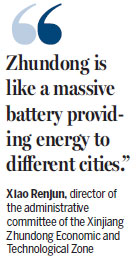
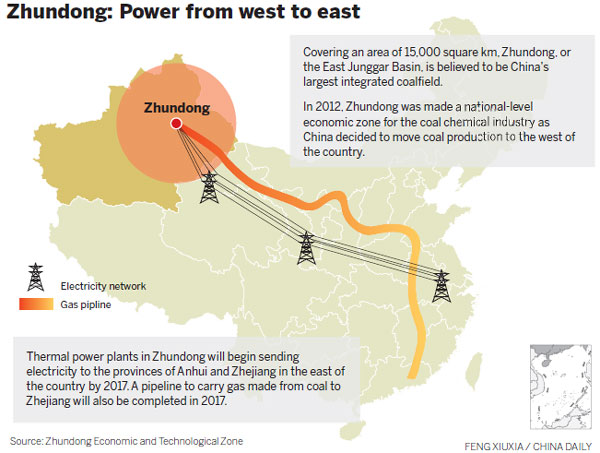
|
More power plants will be built in the Xinjiang Uygur autonomous region, including the coal-rich area of Zhundong, so electricity can be provided to Sichuan province in the southwest, and provinces in the East of the country. Jiang Wenyao / Xinhua |
(China Daily USA 01/23/2015 page5)
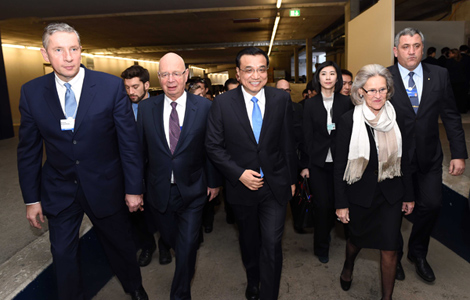
 Li predicts bright future for real estate
Li predicts bright future for real estate
 Wanda boosts its branding in Europe
Wanda boosts its branding in Europe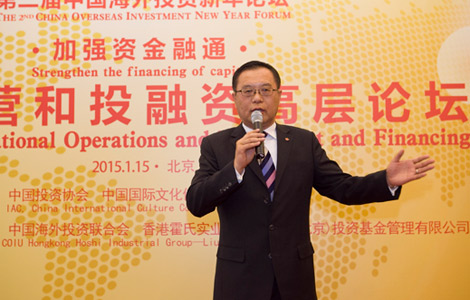
 Ontario highlighted in overseas investment forum
Ontario highlighted in overseas investment forum
 Texas executes man convicted of killing 3
Texas executes man convicted of killing 3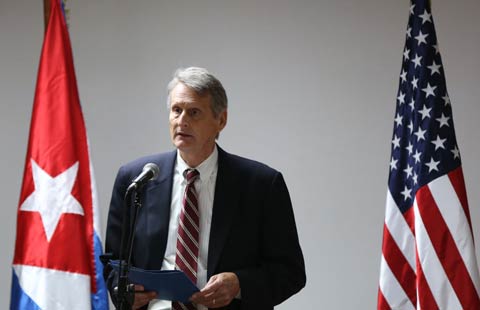
 US, Cuba end migration talks
US, Cuba end migration talks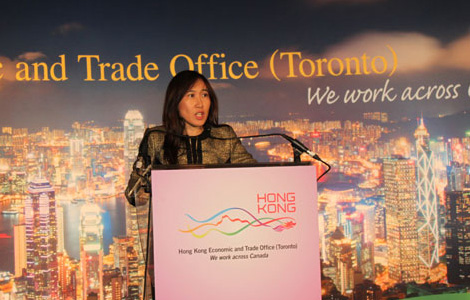
 HK trade office refresh ties in Toronto
HK trade office refresh ties in Toronto
 US Justice Department ready to clear Ferguson
US Justice Department ready to clear Ferguson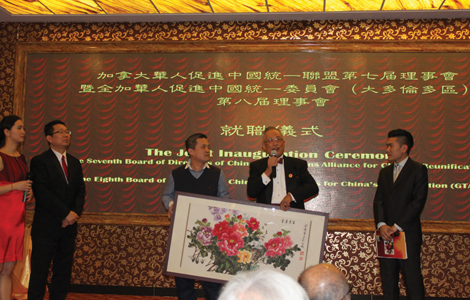
 Across Canada Jan 21
Across Canada Jan 21
Most Viewed
Editor's Picks

|

|

|

|

|

|
Today's Top News
Bank takes renminbi-clearing seriously
Traditional Garb
HK trade office refresh ties in Toronto
Chinese developer buys Canadian ghost town
Beijing gears up for Super Bowl
Premier Li's Davos speech draws praise
China offers Swiss $8b quota for yuan trading
More subsides for intl students
US Weekly

|

|
